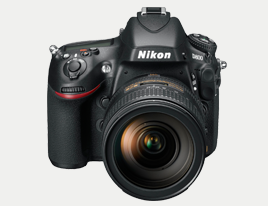The day that many of us were beginning to question would ever come finally has. Nikon has announced the long anticipated replacement to the D700 DSLR, called the D800. In my article Why the Nikon D700 replacement won't be 36 megapixels I predicted what I thought the D800 would look like. To put it simply, I was wrong.

If you read my previous article, you know I thought there was no way Nikon would introduce the D800 with a 36 megapixel sensor. But as with the 1 Series, Nikon showed us why they have stayed in the game as one of the industry's pioneers. The D800 is a game changer in the resolution arena. While camera's like the Canon 1D X and the Nikon D4 went down in resolution, the D800 tripled it. Traditional thought told those of us in the industry that it would be impossible to maintain speed and ISO performance with such a huge increase in resolution. Nikon answered with the Expeed 3 processor. The same processor that allows the 1 Series cameras to shoot 10 frames per second, and maintain such good high ISO image quality with a smaller than expected sensor size, is what allows a camera like the D800 to exist. Without Expeed 3, the D800 would look very different.
By choosing a 36 megapixel sensor for the D800, Nikon has eliminated, or at the very least redefined, the view of resolution they have held since the early days of DSLR's. This is huge. Up until now, resolution has taken a back seat to improvements in dynamic range, high ISO performance, and speed. Other manufacturers seem to have abandoned the "resolution race" and have started to concentrat on these areas with newer cameras. And while many may argue that these are areas where we would like to see continued improvements, there were likely few who thought they NEEDED such huge files. However, based on initial statements from Nikon, it seems that with the D800, we will be able to have our cake and eat it too. New processor and sensor technologies now available are allowing massive increases in resolution from the D700, without having to sacrifice dynamic range, any high ISO performance, and very little speed. We obviously won't be able to enjoy improvements at super high ISO's like we've come to expect with a new camera, but not taking a step back with this much resolution is quite amazing.

I have to say, the announcement of the D800 is bittersweet for me. I would have loved to have been right about the camera being lower resolution. Unfortunately, the unpredictable nature of rumors didn't lean my direction this time. But while everyone is caught up with the massive resolution, I find myself continually asking what this shift in ideology means long term for Nikon. Don't underestimate this change in their corporate philosophy. I think this is the first of many incredibly revolutionary products from Nikon, products that we never would have imagined we would see from them. They've just thrown caution to the wind and introduced a product that a year ago people would have expected of Canon, not Nikon. I have a feeling that this is just the tip of the iceberg.
Of the specs I will say this, the D800 looks like it will be amazing. As many expected, Nikon has added video to the camera, which will make this an enormously popular camera for video shooters and still photographers alike. The newer autofocus and metering systems make an already great system even better, and I am glad to see that Nikon kept the built in flash. If you haven't taken advantage of the built in flash to trigger off camera speedlites, you need to. It's an invaluable tool that far too many people overlook. I can't wait to get my hands on a D800 and see how it performs. For now, I will be doing what I suspect many people lusting after the camera will be doing...buying larger hard drives.
Until then, Canon, the ball is in your court.

